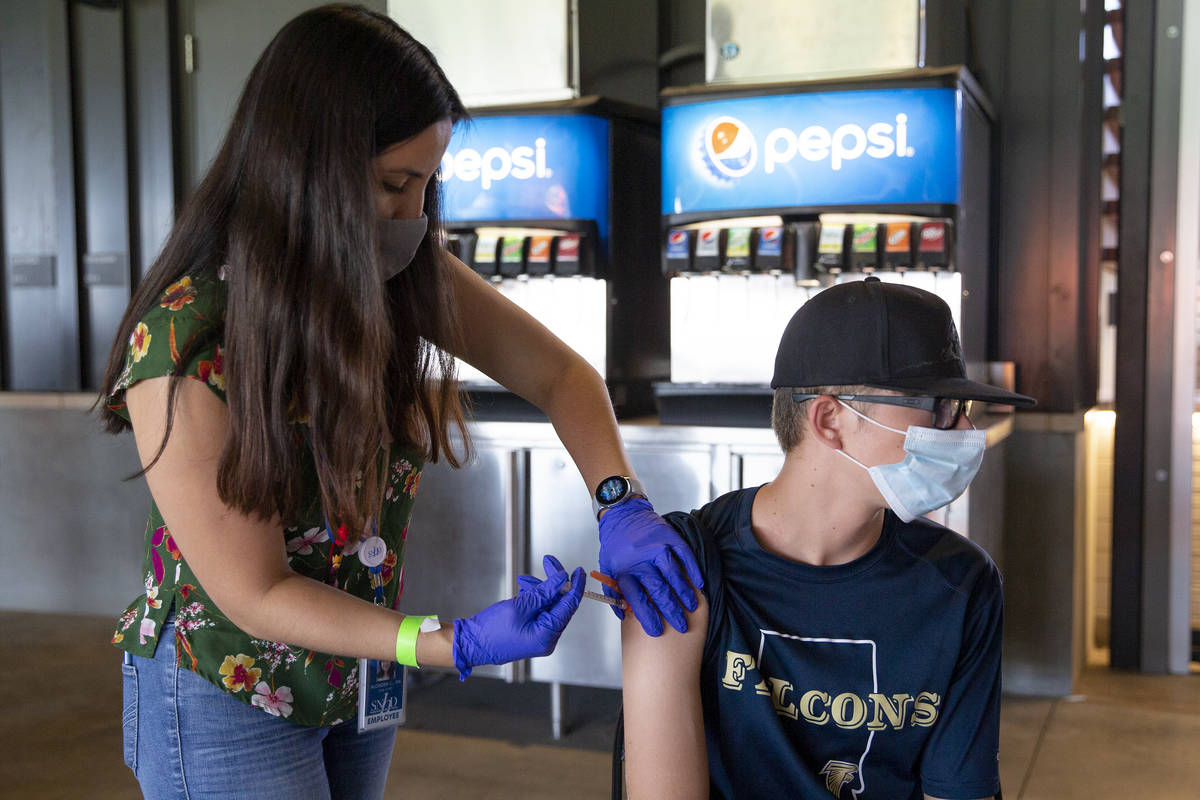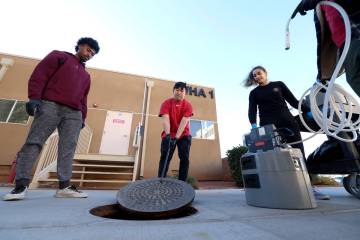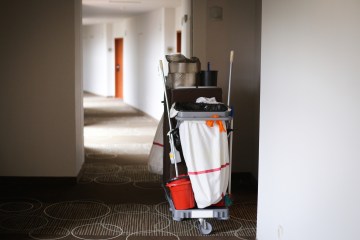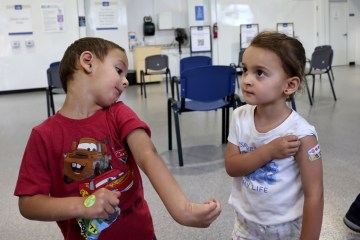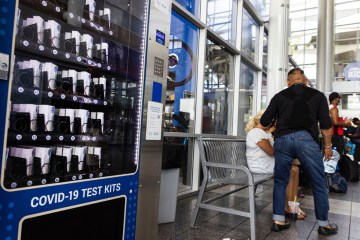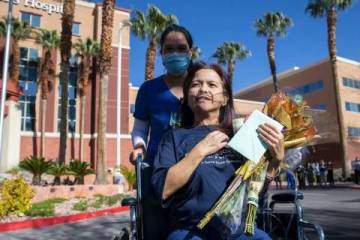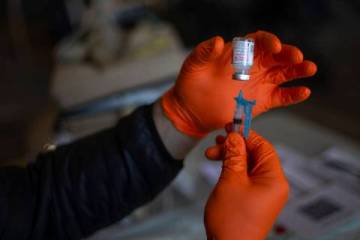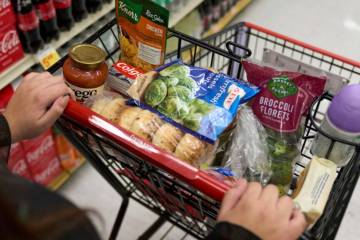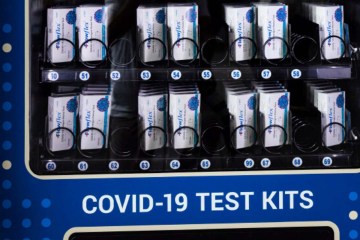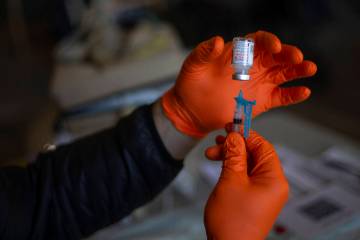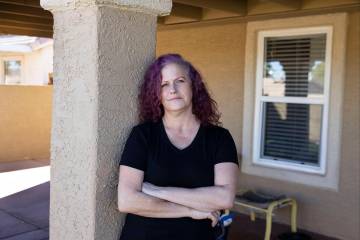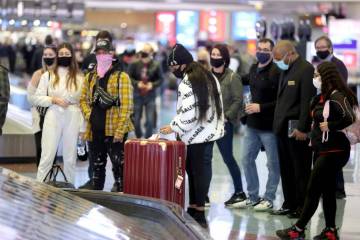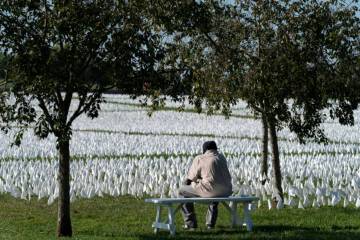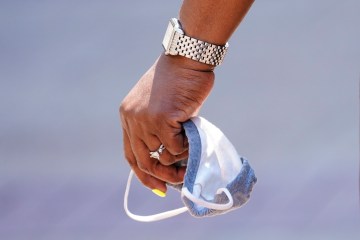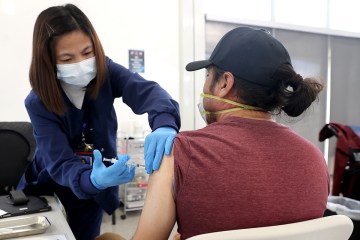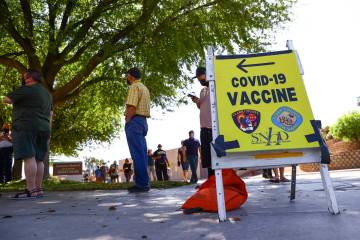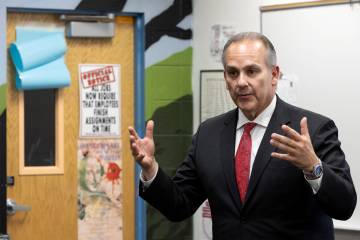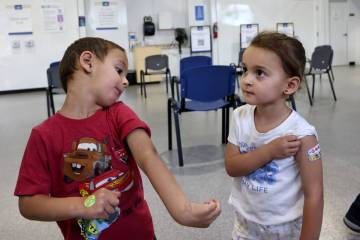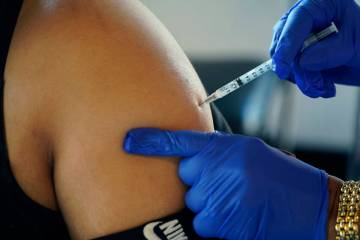Most Nevada COVID-19 metrics climb again; positivity rate rise stalls
Nevada continued to see increases in most of its major coronavirus metrics on Friday, with new cases exceeding 1,000 for the sixth straight day, a dozen deaths and an increase in hospitalized COVID-19 patients.
Updated figures posted by the Department of Health and Human Services on the state’s coronavirus website showed 1,310 new COVID-19 cases reported over the preceding day. That was the second highest single-day increase since the streak of 1,000-plus daily reports began on July 23.
New COVID-19 cases remained higher than the moving 14-day average of 870. The rate has been quickly trending upwards since it hit a recent low of 132 average cases per day on June 10, according to the state data.
The 12 deaths reported were nearly double the moving two-week average of fatalities, which remained unchanged at seven.
Friday’s report pushed totals in the state to 356,401 cases and 5,912 deaths from the disease.
Data guide: COVID-19’s impact on Nevada
The state’s two-week test positivity rate, which essentially tracks the percentage of people tested for COVID-19 who are found to be infected, remained unchanged at 14.3 percent. The rate has more than quadrupled since hitting its recent low of 3.3 percent recorded on June 10 and has matched the 14.3 percent peak seen during last year’s summer surge of the disease.
The test positivity rate has either increased or remained flat every day for nearly seven weeks, state data shows.
The update also showed there were 1,133 people in Nevada hospitalized with confirmed or suspected COVID-19 cases, four more than the day prior. Hospitalization totals have been trending up since the second week in June, and have nearly reached height of last summer’s peak, which was 1,165, state data shows.
Current hospitalization totals are slightly more than half of the all-time high, which was 2,126 recorded on Dec. 23.
State and county health agencies often redistribute the daily data after it is reported to better reflect the date of death or onset of symptoms, which is why the moving-average trend lines frequently differ from daily reports and are considered better indicators of the direction of the outbreak.
The disease metric increases prompted Gov. Steve Sisolak this week to issue an emergency mandate for Nevadans in counties with high rates of COVID-19 transmission to wear faces masks indoors, regardless of vaccination status. Officials are hoping that renewed mask usage and more vaccinations will stop the current surge, which has been driven by the more contagious delta variant.
The state has seen upticks in both testing and vaccinations in recent weeks, though both those gains have been relatively small in comparison to the run-ups of the main metrics.
The moving two-week average of daily tests per 100,000 people, for example has increased from a recent low of 138 on June 28, to 222 as of Friday, state data shows.
Meanwhile, 47.53 percent of Nevadans 12 and older have been fully vaccinated, which is 0.66 percentage points higher than the week prior.
The average has gone from a recent low of 4,737 on July 16, to 5,851 as of Friday, state data shows.
Clark County, meanwhile, reported 1,059 new coronavirus cases on Friday, according to data posted on the Southern Nevada Health District’s coronavirus website. All of the deaths reported in the state occurred in the county.
Cumulative county totals rose to 280,201 cases and 4,705 deaths.
The county’s two-week test positivity rate decreased by 0.1 percentage points to 15.4 percent.
Contact Katelyn Newberg at knewberg@reviewjournal.com or 702-383-0240. Follow @k_newberg on Twitter.
Nevada vaccinations
—12+ population: 2.64 million.
— Doses administered: 2.69 million.
— Vaccinations initiated: 1.53 million.
— Vaccinations completed: 1.27 million.
— Eligible fully vaccinated: 47.53 percent.
Sources: Department of Health and Human Services; U.S. Census Bureau.



